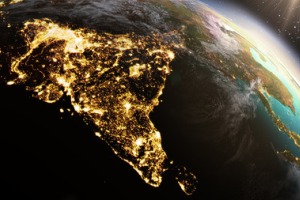India to see world’s largest IoT network

HPE and Tata Communications in India are about to rollout the world’s largest IoT network connecting 2,000 communities and 4 million people. This comes after successful trials in Bangalore, Delhi, and Mumbai which improved the lives of millions by creating better water quality and public safety systems.
The use of the Internet of Things (IoT) is revolutionising not just how the rich run their homes, but how businesses operate and are able to employ more people, and the lives of everyday people as well.
How the rollout affects everyday lives
Developed in conjunction with public infrastructure projects, the new network will include public lighting – using low cost, flexible LED lights, theft protection proximity sensors, and both tracking and SOS-based devices. All three will improve the day-to-day safety of individuals across India, says Jocelyn Brown, a professional freelancer writer.
Water quality, a long-term issue in the country, will be improved by better water movement, treatment, and quality control which will include sensors and other devices with real-time tracking and monitoring. In this, India is not alone, as Thailand, Singapore, and Australia look to use IoT for public safety and lighting projects.
Improving business performance
IoT has long been seen as the key technology in developing low-cost, flexible working structures, but it can also boost established businesses. The Tata/HPE network complements business development within the same regions. As with municipal systems, IoT allows businesses to better control their waste management, electricity, and lighting – often cutting down on costs.
It moves beyond this however, to cloud computing which allows for better inter and intra team communication, better sharing of data along vertical structures, and the use of technology to connect disparate work forces across the globe. The best cloud storage and computing packages allow for the use of team working and scheduling platforms as well as photo and data storage.
An environmentally friendly solution
The rise of IoT could not come at a better time for India. Over the last century the country has steadily improved its economic situation and level of living standards. The main question for all developing nations is how to reach 1st world development without destroying the environment or putting the health of its people at risk.
IoT is now offering relatively low cost ways to improve water quality, safety, and public lighting (LEDs are at least twice as efficient as other bulbs). These technologies are green, reduce light pollution, energy usage, and regulate the environment more than previous technologies. If linked to green energy production, these IoT networks will lead the world.
The author of this blog is Jocelyn Brown, a professional freelancer writer.
About the author:
Jocelyn Brown is a professional freelancer writer and mother. She loves the freedom that comes with freelancing and the versatility it allows her in covering many different topics and themes. When not at work she enjoys running, hikes in the country and making the most of family time.
Comment on this article below or via Twitter @IoTGN
